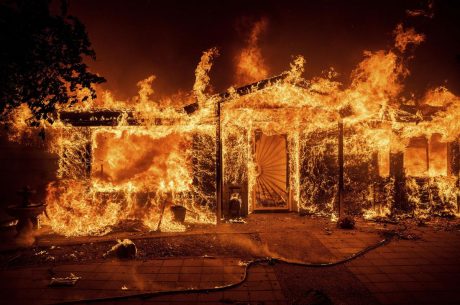Table of Contents
When a fire strikes your home in Merced, the aftermath can feel overwhelming. One often overlooked yet challenging issue is soot buildup, especially on metal surfaces like appliances, hardware, and fixtures. If not treated properly, soot can permanently corrode metal and affect your home’s air quality.
In this post, we’ll walk you through how to remove soot from metal, why it’s essential to act fast, and when to call in experts like PuroClean of South Merced to handle the cleanup for good.
Why Removing Soot from Metal Matters
Soot is more than just a visual stain—it’s acidic and can cause long-term damage to your property. Metal surfaces exposed to soot can rust, tarnish, and weaken. This damage is accelerated in humid environments or if water was used to extinguish the fire.
Neglecting soot cleanup can also lead to:
- Structural deterioration
- Lingering smoky odors
- Health hazards (respiratory issues, skin irritation)
- Decreased property value
That’s why knowing how to remove soot from metal safely and effectively is crucial.
1. Prioritize Safety Before You Begin
Before jumping into cleanup:
- Wear protective gear: gloves, a face mask (N95 or better), and safety goggles
- Ensure the space is ventilated
- Turn off electricity if the fire affected wiring nearby
Soot particles can be toxic. Don’t risk your health—always prioritize safety or call professionals for severe cases.
2. Vacuum Loose Soot Gently
The first physical step in how to remove soot from metal is to use a HEPA-filter vacuum to remove loose soot without spreading it.
- Do not press the vacuum directly on the surface
- Use soft-bristle attachments
- Avoid vacuums without HEPA filters—they may blow soot back into the air
This step prevents scratching the metal and reduces the amount of chemical cleaning needed later.
3. Apply a Soot Cleaning Solution
Once loose soot is removed, you need a cleaning agent. Depending on the severity of damage, choose from:
- White vinegar and water – for light soot on stainless steel
- Baking soda paste – gentle yet effective on brass or aluminum
- Trisodium Phosphate (TSP) – for heavy soot but with extreme caution
- Commercial soot removers – ideal for chrome and appliance surfaces
Dampen a cloth in your chosen solution and gently wipe. Never soak the metal—excess moisture can cause rust.
4. Use a Non-Abrasive Scrubber
For stubborn soot that clings to textured or intricate metal, use:
- A microfiber cloth
- A sponge with a non-scratch side
- Soft-bristled brush (like a toothbrush) for small areas
Avoid steel wool or hard-bristled brushes—they’ll scratch or erode the metal surface.
5. Dry and Polish the Metal Thoroughly
After cleaning, thoroughly dry all metal surfaces to prevent oxidation. Use a clean microfiber towel to wipe down, then consider:
- Applying a metal polish to restore shine
- Using a protective sealant to prevent future corrosion
- Repainting fixtures (for blackened hardware or damaged coatings)
This step completes your soot removal process and restores your metal surfaces’ original appeal.
6. When to Call in Fire Damage Experts
Sometimes soot damage is beyond DIY. You should contact a professional restoration team like PuroClean of South Merced when:
- You notice deep stains that won’t lift
- There’s visible corrosion or rust
- The smell of smoke lingers after cleaning
- You have health concerns related to exposure
- There’s extensive damage to structural elements
Experts use industrial-grade cleaning agents, ozone treatments, and electrostatic restoration techniques to safely restore your property.
7. Prevent Future Soot Build-Up with Proactive Measures
Fire might be unpredictable, but prevention and preparation can help. Reduce future soot risk by:
- Installing smoke detectors with early warnings
- Using fire-resistant materials around stoves and heating systems
- Cleaning fireplace chimneys regularly
- Scheduling annual HVAC inspections to prevent soot dispersal
Being proactive not only saves cleanup stress but also protects your home investment.
FAQs About How to Remove Soot from Metal
Q1: Can I use bleach to clean soot off metal?
No. Bleach can react poorly with soot and certain metals, leading to corrosion or toxic fumes. Stick to safer alternatives like vinegar or commercial soot removers.
Q2: How soon should I clean soot after a fire?
Immediately. The longer soot stays, the more damage it causes. Even within hours, it can start corroding metal.
Q3: What metals are most vulnerable to soot damage?
Aluminum, copper, brass, and stainless steel can all be damaged—especially if exposed to moisture and soot simultaneously.
Q4: Will soot stains come back after cleaning?
Not if cleaned thoroughly and sealed. However, hidden soot can resurface later, which is why professional assessment is wise.
Q5: Is soot dangerous to my health?
Yes. Soot contains fine particles and carcinogens. It can cause breathing issues, skin irritation, and long-term health problems if not cleaned properly.
Need Professional Soot Removal in Merced? Trust PuroClean of South Merced
Soot cleanup after a fire isn’t just about restoring appearances—it’s about protecting your home, health, and peace of mind.
If your Merced property has suffered fire or smoke damage, PuroClean of South Merced is here to help. Our certified technicians use advanced tools and techniques to remove soot from all surfaces—including metal—safely and effectively.
✅ 24/7 Emergency Response
✅ Insurance-Approved Services
✅ Local, Trusted Technicians
✅ Satisfaction Guaranteed
Call us today or schedule your free soot inspection now. Don’t wait until it’s too late, protect your home with professional fire restoration you can trust.



